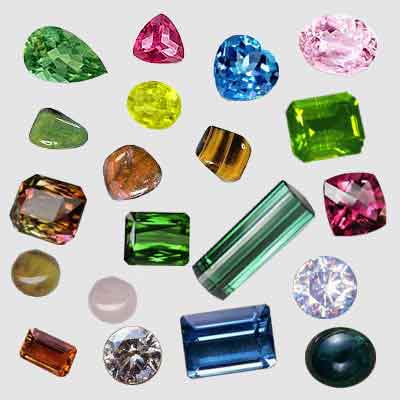
Perhaps the most obvious sign of a lack of appreciation of gemstones is the common use of the term "semiprecious". While in a famous retail store GEMOLOGIST noticed a couple examining with obvious interest and appreciation an attractive brooch set with green stones. He overheard the man ask about the stones in the piece. The "salesman", if he could be called that, answered, "Oh, those are just semiprecious stones called tourmaline". The prospective customers, who had shown keen interest in the brooch, left the store immediately without looking at other merchandise. This example points up a practice that is all too common among jewelers.
Almost every gem mineral is found and is for sale in the industry in a great variety of qualities. One quality of jade in a ten carat size may sell for $4 and another quality for $80 or much more. A ruby may be very fine and sell for $400 pet carat. A large opal may range in value from $4 to $1,000. Almost every variety of the transparent gem species may occur in gem quality and be properly called a precious stone from a relative price stand point, whereas another specimen of the same variety may be almost worthless. Not every ruby is precious and not every piece of jade is semiprecious. This is one reason for calling all stones GEMSTONES and not classifying them as precious and semiprecious. More important is the fact that the moment that we call stones semiprecious, we have lessened their value in the eyes of the general public, and the desirability and sale of many stones of great merit are thus substantially decreased.
The most common query received by the jeweler from the customer who sees an unfamiliar stone seems to be "Is it a precious stone?" If the jeweler is not a student of colored stones, his probable answer is, "No, it is only a semiprecious one; diamond, ruby, sapphire and emerald (and perhaps he includes pearl) are the only precious stones. Every experienced gem salesman knows that this statement may have the result of immediately destroying in the customer's mind any interest whatever in the stone about which the inquirer was made and for which the inquirer may have been a customer. This is another of the reasons for the common belief that "colored stones don’t sell".
Few Indians & Foreigners desire anything but the best. They don't have to have gems and jewelry, and unless they have a desired or need for a thing, they won't buy it unless high pressured. High pressure results in dissatisfied customers. Semiprecious seems second best. Therefore, the buying public, either lacking in sufficient knowledge or appreciation of these stones called semiprecious by their salesmen, or unable to find them for sale by a dealer who has the knowledge and appreciation that they themselves lack, buy synthetics or glass imitations in preference to the doubtful value of a semi-precious thing. Why should we discourage sales by continuing the use of thing term? It should be abandoned totally.

